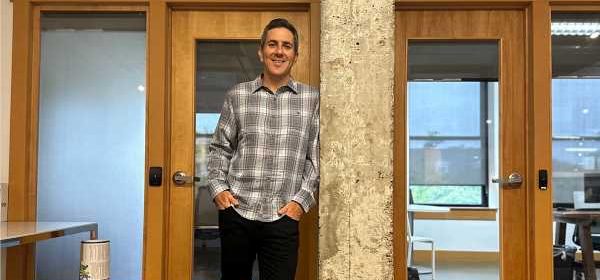ciprofloxacin gastrointestinal side effects

Photo: Guy Friedman
When Amazon Clinic spread out into all 50 states, SteadyMD was right there with it – or you might say within it.
SteadyMD, what does it feel like on valium which offers a B2B telehealth platform and nationwide clinician workforce, has been an important part of Amazon Clinic’s journey. The telehealth company worked with Amazon for months helping develop Amazon Clinic and was one of the first participating providers on the service when it launched in November 2022.
Now, SteadyMD is part of Amazon Clinic’s expansion that provides video visits nationwide – including in the 16 states that require synchronous visits – to augment existing messaging-based, asynchronous telehealth capabilities. Amazon Clinic users nationwide can get help for 30 common health concerns such as urinary tract infections, pink eye and erectile dysfunction.
SteadyMD provides services for big tech giants like Amazon and for small primary and urgent care healthcare provider organizations. We interviewed Guy Friedman, CEO and cofounder of SteadyMD, to discuss the Amazon Clinic venture, and what hospital and health system IT leaders need to know about telehealth companies like his as the demand for virtual care increases.
Q. What role does SteadyMD play in the Amazon Clinic offering?
A. SteadyMD was the telehealth provider on the Amazon Clinic platform at its launch last November, making both our technology and our nationwide provider group available to their members. Through the Amazon app or on the Clinic page, their customers can choose SteadyMD’s licensed doctors and nurse practitioners to address more than 30 common health concerns.
Although there are other provider groups now available to Amazon customers, SteadyMD’s involvement continues to expand, including collaborating on new conditions and features with healthcare leaders at the company.
Q. What kinds of services were you providing via Amazon Clinic around the November 2022 launch?
A. SteadyMD played a vital role in the early stages of Amazon Clinic, serving as the exclusive provider during the private beta launch for Amazon employees. Leveraging our nationwide reach and consumer-focused experience, we contributed to the development of elements such as user experience, care protocols, patient intake forms and managing patient flow.
As an original participating provider in 32 states at the initial launch, we have continued to support Amazon Clinic’s expansion, now offering video visits in all 50 states.
Q. SteadyMD is part of Amazon Clinic’s recently announced expansion to 50 states, including in the 16 states that require synchronous visits. What will your providers be doing now?
A. SteadyMD’s nationwide provider network ensures our physicians and clinicians in synchronous-visit-only states will maintain their commitment to delivering exceptional care through video or phone consultations. For states with visit-modality flexibility, consumers have the freedom to choose between asynchronous or synchronous visits and select from our providers who offer one or both methods.
It is important to note that Amazon Clinic holds all its service collaborators to a rigorous evaluation process, including both synchronous and asynchronous providers. Like other providers on the platform, SteadyMD undergoes continuous clinical quality and customer experience reviews by Amazon’s clinical leadership team.
We consistently demonstrate our value as a participating provider group through the performance of our clinicians and the resulting high levels of customer satisfaction.
Q. Moving forward, what do hospital and health system IT leaders need to know about telehealth companies like yours as the demand for virtual care increases?
A. This question perfectly aligns with the previous questions about Amazon Clinic because hospital and health system leaders should know – as most already do – that direct-to-consumer telehealth services will continue to become more popular, specialized, accessible and affordable for their patients in the coming years.
This means their competition extends beyond brick-and-mortar providers in their communities or regions to include well-funded, highly recognizable national brands. I’m not just referring to primary care services either, but also specialized chronic condition and post-acute care that requires remote monitoring and integrated in-home services.
More complex virtual care services such as these will become more common from non-local providers, especially as commercial health insurers recognize how virtual care is reducing costly emergency department visits and hospital stays, which also happen to be health systems’ highest-revenue services apart from elective surgeries.
What brick-and-mortar providers have going for them is their brand in the local geography. These organizations are connected with their communities, and many have built trust equity over many decades with generations of families and businesses.
Through their telehealth services, these health systems should leverage their local name recognition and trust foundation, but perhaps a risky strategic move they could make is to further overextend their existing clinicians and IT staff by adding telehealth visits to their already jam-packed schedules. This has the potential to negatively affect care quality and the user experience.
Health systems would be wise to outsource elements as much as possible to ease their burden and choose vendors who are highly experienced with a track record of delivering the highest quality care.
Implementing this hybrid type of telehealth structure can ensure that the trust and name recognition status they have worked so hard to build remains intact, offering them an advantage over the growing market of direct-to-consumer competitors.
Follow Bill’s HIT coverage on LinkedIn: Bill Siwicki
Email him: [email protected]
Healthcare IT News is a HIMSS Media publication.
Source: Read Full Article